The Parkside Saints finally found a home. An October 4, 2019 announcement from Philadelphia’s Rebuild initiative announced the completion of a practice field for the youth football club at the Parkside Evans Playground in West Philadelphia.
The Saints, founded in 2010 by Coach Cliff Smith, had practiced in whatever open space they could find in Fairmount Park and had played their home games on fields in other parts of the city.
The City’s 2019 announcement said that the practice fields were just the first part of the project. “Next up is a second, game-ready field, complete with stadium lighting and bleachers.” The announcement didn’t mention where that second field would be.
Elena López, executive director of the Philadelphia Area Disc Alliance (PADA), learned the location in a meeting with Philadelphia Parks & Recreation (PPR) Commissioner Kathryn Ott Lovell in April 2021. The Saints’ new synthetic turf playing field, including a track around the perimeter, would be built on top of Edgely Field, the space that the Disc Alliance had played on and maintained for nearly 40 years, and which it shares with the Prior Cricket Club, which had been playing there for even longer.
“We were in shock,” López says. She looked up Rebuild online and learned that the goal was to build new field space, which seemed at odds with using an existing field for something else.
Edgely Field is a six-acre clearing in the woods of West Fairmount Park, a quarter-mile west of Belmont Avenue. Another smaller field sits on the other side of a small parking lot. (There is another, unrelated Edgely Field in East Fairmount Park.)
The city acquired Edgely Field in 1898. Until that time it had been a horse racetrack called the Gentlemen’s Driving Park. An aerial image from 1930 shows the elliptical space with a dirt track around the outside, indicating it was still used for racing at that point, along with the faint outline of a cricket pitch, which becomes clearer in the next available image from 1959.
Ultimate Frisbee players began sharing the space by the 1980s. Philadelphia at that time had disinvested in park maintenance, as the city’s population declined and industry departed for other regions and countries. PADA, along with the Prior Cricket Club, picked up the slack, mowing and otherwise maintaining Edgely Field. As other open spaces in Fairmount Park grew in with brush and trees, eventually transitioning to forest, Edgely remained a field.
Edgely Field is currently large enough to fit six concurrent games of ultimate, with a nearby field able to host one more. Rebuild held a “Stakeholder Session” on June 30, 2021 to explain how it had picked Edgely. A slide from the session shows a sketch of the new synthetic turf playing field, including a track around the perimeter, imposed over Edgely Field, obliterating three fields’ worth of space.
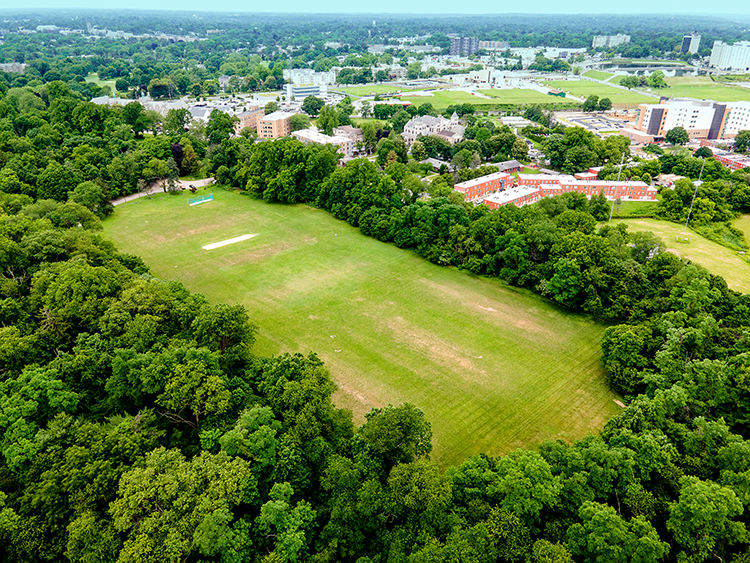
Among the details still to be determined about the new field is its cost. “Each project goes through a community engagement and design process where the [rebuilding of the facility] relies on significant community feedback to address areas where residents see the most need,” says Raymond Smeriglio, Rebuild’s chief of staff. “We will continue to work with future users of the Edgely fields on the necessary elements needed to deliver a quality field space for young people to play, which will more adequately define the budget.”
They have dedicated investment to the quality of fields that you didn’t have in Philadelphia.”
— Leroy Fisher, cofounder of the North Philadelphia Aztecs football club
Although representatives of the Saints declined to speak with Grid for this article, Leroy Fisher, one of the founders of the North Philadelphia Aztecs football club of Hunting Park, describes what youth from Philadelphia see when they travel outside the city to play suburban teams. “Traveling to play on other fields as a kid and as an adult, they see how manicured fields are in suburbs and other cities. They have dedicated investment to the quality of fields that you didn’t have in Philadelphia.”
The Aztecs’ synthetic turf field (including a track but without the bleachers proposed at Edgely) cost $1.4 million in 2013 ($1.76 in 2022 dollars). “I am ecstatic we made the choice of synth field,” Fisher says. Fisher cofounded the Aztecs in 1992 along with some friends who shared a concern for local youth and a passion for football. “Coming back from the military I met a young kid who said he had nothing to live for. He lived in a four-block radius. I talked to some friends, and we realized we had this 87-acre park [Hunting Park] that wasn’t being utilized.”
“You couldn’t tell a worse story than the field as it was back then,” Fisher says. Pipes from the adjacent swimming pool leaked, turning the sidelines into mud. “When we took over the field we would have to walk the field to remove glass, debris and drug paraphernalia. We had to play games in Edison because our field wasn’t suitable, a mile away.”
The Aztecs won a national title in 2004, and the club capitalized on the publicity from the title to launch a fundraising drive — which garnered a $200,000 donation from Michael Vick — that culminated in the new field.
The Aztecs maintain the synthetic turf field with Parks & Recreation, leveraging labor from volunteers and from people serving court-mandated community service hours. “The synthetic turf is easy to maintain. It has lasted and is still in great shape for 10 years, with less maintenance issues than you would have had on a grass surface,” Fisher says. “In more affluent places you can see pristine and maintained fields. This is what we can give our kids. It’s good that we can give them something better than what we see throughout the community.”
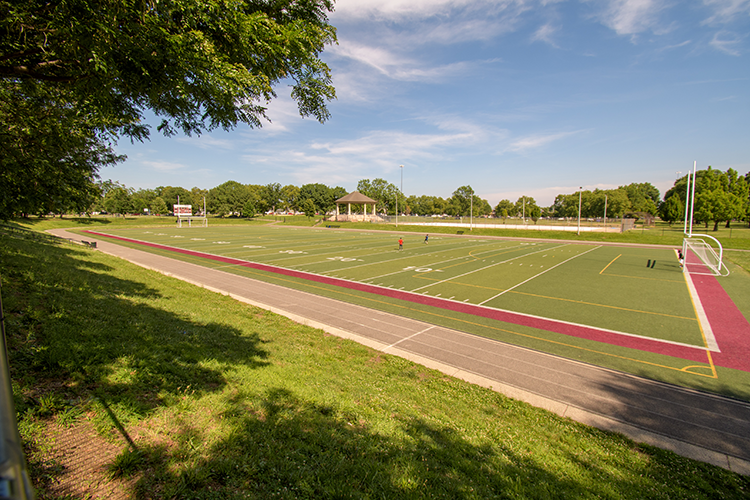
Fisher considers structured sports to be a matter of life and death for local youth. Philadelphia is in the midst of a surge of violence, with 550 homicides in 2021 and 222 so far in 2022 , as of this article’s writing. Black and Hispanic people in neighborhoods like Hunting Park and Parkside have borne the brunt of the epidemic. Fisher says that structured youth sports programs, like those run by the Aztecs and the Saints, can keep kids occupied in positive activities and reduce crime, a claim supported by research into youth sports participation and crime. “When we keep them off the streets from 5 to 7:30, when they could get into trouble, these fields save lives,” Fisher says. “We don’t hear about it on the news. You hear about the one kid with a gun killing somebody versus the 400 kids that have benefited on fields not getting in trouble.”
Fisher is in favor of building the Saints’ field. “Our priority can’t be adults who can get in their cars and drive somewhere else,” he says. These kids are stuck in these communities and might not ever get to experience great services.”
PADA has welcomed the Saints to practice and play games at Edgely, but it has also mobilized against the proposed construction project, launching a Preserve Edgely initiative. Along with a critique of the selection process, Preserve Edgely argues that building the new field on top of existing fields would yield a net reduction in playing space and increase pressure on playing fields throughout the city.
PADA’s struggles with the City have motivated Marc Davies, an attorney and past director of PADA, to launch Friends of Fairmount, a group that advocates for the protection of park spaces cared for by private stewardship groups. Friends of Fairmount includes what it says are similar examples at the Cobbs Creek Golf Course, the Sedgley Woods Disc Golf Course and FDR Park. Davies says that the group has concerns about PPR not following ordinances about land conversion in the park.
Philadelphia law prohibits converting (“a change to the physical characteristics or use of land”) outdoors park space from one use to another without several steps including approval of the Parks & Recreation Commission, a body that hasn’t met since October 2019, and a vote by City Council.
Politicians like to stand in front of a ribbon and say, ‘We did this for you,’ but they are less good about committing the operating money to pay for ongoing maintenance.”
— Brett Mandel, good government activist
According to materials from the June 30, 2021 stakeholder session, Rebuild had considered three other sites: one on top of George’s Hill near the Parkside Evans Playground, one near Ohio House off of Belmont Avenue, and one at the Sweetbriar Fields just north of the School of the Future. Building on top of George’s Hill (a wooded site that had previously been a drinking water reservoir) proved to be too expensive, and Rebuild determined a football field with lights and bleachers wouldn’t fit with the historic Centennial District that includes the other two sites. Edgely Field is flat and out of sight of historic landmarks. Notably, there seems to have been no public input in the site selection process.
Other signs point to a rushed, ad hoc site selection. Rebuild is a signature initiative of the Kenney administration in which the City is borrowing money (by issuing bonds) to rehabilitate run-down libraries and parks infrastructure like playgrounds and rec centers. The City is using income from the City’s sugary beverage tax to make payments on the bonds. Rebuild kicked off with a list of 62 proposed sites that were then approved by City Council. Smeriglio says, “The Edgely field project is a part of the approved Parkside Game project that was originally introduced and approved by City Council during the first introduction of Rebuild sites.” That initial list, and the lists that City Council has approved since, include the “Parkside Fields,” but make no specific mention of Edgely. A mapping tool for Rebuild that shows eligible Rebuild sites lists the “Belmont and Edgely Cricket Field” as distinct from the “Parkside Fields,” which on this map is placed on top of George’s Hill, one of the locations later eliminated from consideration.
Synthetic turf fields have several drawbacks compared to natural grass. Grid recently reported on their contribution to the urban heat island effect and how they expose athletes to toxic chemicals such as PFAS (sometimes called “forever chemicals” because they can persist for decades, in bodies as well as in the environment). The overall cost of synthetic turf fields is higher than natural grass due to higher installation costs, though maintenance costs are lower. Thus, from a budget perspective, a synthetic turf field shifts costs from operations budgets to capital budgets. This is particularly important in a parks system that underfunds maintenance, resulting in the scarcity of quality playing fields that underlies the dispute over the proposed complex at Edgely.
Spending money on maintenance like fertilizing, aerating, and seeding grass fields doesn’t make headlines in the same way as ribbon cuttings at new facilities. “Politicians like to stand in front of a ribbon and say, ‘We did this for you,’ but they are less good about committing the operating money to pay for ongoing maintenance,” says Brett Mandel, government reform activist, former assistant controller for Philadelphia, and commissioner of Greater Philadelphia Men’s Adult Baseball League.
Capital improvements and operations (including maintenance) are also funded differently. Operations funding is generally supported by the taxes a government can bring in every year, while capital spending, like Rebuild, is based on money borrowed by issuing bonds. “The capital budget is the fun budget,” Mandel says. “The mayor and City Council decide what to spend and at any moment we have millions of dollars to spend on building a new field, but the effect on the operating budget [for maintenance of the new facilities] is almost never considered, and if maintenance is ignored, the new field becomes unusable or dangerous pretty quickly.”
At tustin playground in the city’s Overbrook neighborhood, Gregory Allen doesn’t recall seeing the City do anything more than add clay to the baseball diamond and mow the grass on the field, where the Saints sometimes practice, as does the football team from Overbrook High School. With no irrigation, the center of the field turns to a “dust bowl” in the summer. Allen supports building the Saints’ new field at Edgely, saying that PPR should favor the needs of local youth.
Allen has a long relationship with Philadelphia’s parks. “My first jobs were with the PPR system youth employment programs.” Today he sits on the City’s Parks & Recreation Commission and is that commission’s representative on Rebuild’s oversight board. He is also on Tustin’s Recreation Advisory Council, a volunteer group that leverages community support for the playground, which includes a pool, basketball courts and a building for programming along with the field and the playground itself.
“My understanding is that Parks & Rec hasn’t had the budget to aerate or seed fields in years,” Allen says. “I think some fields get aerated and seeded, but I don’t think Parks & Rec has as much to do with it as really active advisory councils who find the funding or have a neighbor who has a landscaping business and provides it as
a donation.”
Allen pointed to other recreation centers as examples of public facilities benefitting from more affluent or resourceful neighbors. “At some locations, you have more active and resourceful people living in that neighborhood. So if they want to play sports, they’re going to get involved with the advisory council in their community. In my Overbrook neighborhood, you’ve got fewer people working together to find other resources to help us, so there aren’t as many resourceful people engaged.”
Allen spoke with Grid at the playground, sitting at a wobbly picnic table missing one of its benches. Tustin recently had two new basketball courts installed with funding from the Nancy Lieberman Charities and the Mamba and Mambacita Sports Foundation, created in memory of Kobe and Gianna Bryant (Kobe played at Tustin’s basketball courts in his youth). The shiny new court, surfaced with DreamCourt tiles, contrasted with the rest of the aging site.
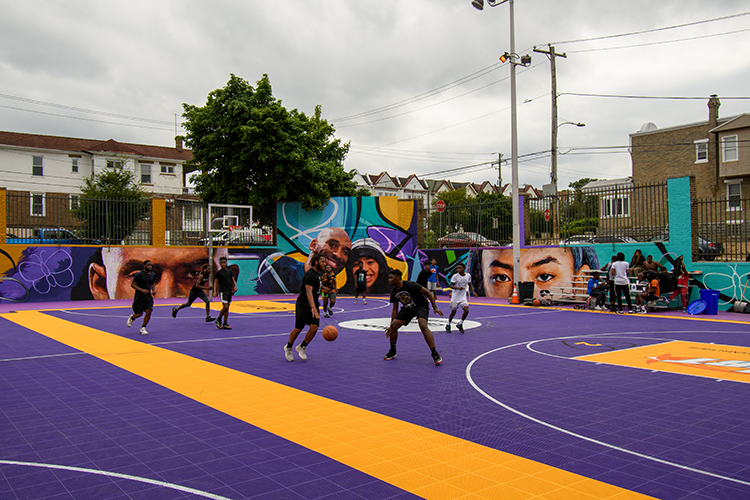
Other physical improvements are in the works, according to Allen, but the playground’s building hasn’t been substantially renovated since it was built in the 1950s. Tustin was scheduled to be but is not an approved Rebuild site, with an estimated $12 million worth of work needed for the playground, building, field and pool. Based on the current rate at which Rebuild is spending money, Allen is not optimistic that funds will remain by the time projects ahead of Tustin are completed.
The funds and the value of time from staff and volunteers that PADA estimates as their investment total more than $50,000 per year taking care of seven ultimate fields’ worth of grass, which would break down to more than $7,000 per field. The cost of maintaining a grass field varies widely depending on the type of field. An Oregon study from the mid-2010s comparing the lifecycle costs of natural grass versus synthetic turf found that grass soccer fields cost between about $10,000 and $51,000 in 2022 dollars, adjusted for inflation, meaning that PADA’s investment is on the low end.
“The City doesn’t even mow the lawn anymore,” says López. In addition to mowing at Edgely, López says PADA takes care of seeding, fertilizing and aerating the fields, along with clearing brush and trees that encroach from the edges.
With more than 600 playing fields of various types, the total for proper maintenance of all of PPR’s playing fields, based on PADA’s figures, would be upwards of $4.2 million. It is unclear how much the City spends on maintaining its playing fields, since the contracts for “turf management” include other spaces such as strips of land along roads, meadows that are mowed infrequently, and grass not used for athletics. Overall, the City spent about $2 million on “turf management” in fiscal year 2022. The fiscal year 2023 budget proposes $2.4 million.
Maintaining fields properly takes more than dollars. Natural grass fields require time to recover after play, limiting use to around 20 hours per week, and it can be impossible to play at all in wet weather without damaging the surface. An advantage of synthetic turf is that one field can host more hours of play per week in any weather, though due to the higher installation expense, the cost per playable hour is similar. Whatever the surface, an athletic field can be contaminated by dog waste or trash such as broken glass bottles or damaged by ATV or bicycle riders, leading to a tension between field quality and access.
“If you build a baseball field you need to put a fence around it if you want to keep it in top shape,” says Mandel. “You can’t have people walking their dogs, running ATVs on it, biking across it if you want it to remain a nice baseball field. You have to separate people from that field, and it kinda sucks. It kinda sucks that I can’t just go out and throw a ball around that field with my kid if we want it to be a place where we can play baseball.”
Without sufficient maintenance and care, even new fields can deteriorate quickly. In 2019-2022, Columbus Square Park in South Philadelphia, which includes a soccer field, was renovated. Today a bare patch of dirt runs from one goal to the other.
Fisher makes the point that community support for the Aztecs’ programming has made field upkeep easier. “The pride that is instilled in the field, the pride is contagious. You take that much pride in maintaining it and keeping it clean. You have to have buy-in.”
Advocates for Philadelphia’s parks, such as the Philadelphia Parks Alliance, are currently lobbying for more funding for Parks & Recreation’s operations budget, focusing on increasing staffing for programming and maintenance at playgrounds, libraries and recreation centers, which offer structured activities such as athletics, after-school programs, and summer camps.
We are proud to say these are some of the best grass fields in Philadelphia.”
— Elena López, executive director of the Philadelphia Area Disc Alliance
“PPR’s budget needs to be increased,” Fisher says. “Why do we have to commision another study in violence prevention instead of investing in youth sports?”
“Of course Parks & Recreation should be fully funded,” Allen says. The budget today doesn’t allow the department to provide proper maintenance. This leaves it up to the local park communities based on their own resources or skill at leveraging outside support. “It becomes important for community folks to know who to go to to get what they need.”
It is impossible to avoid the reality that the quality of playing fields that a child in Philadelphia can play on has depended more on the efforts of private groups than on the City government. In some cases, such as in Hunting Park, talented organizers such as Fisher can leverage outside support. In other cases such as at Edgely, communities of better-off users invest in the public fields they use.
“We are privileged that we are able to dedicate the people, funds and time to this,” López says, “but it’s something we take seriously. We are proud to say these are some of the best grass fields in Philadelphia.”
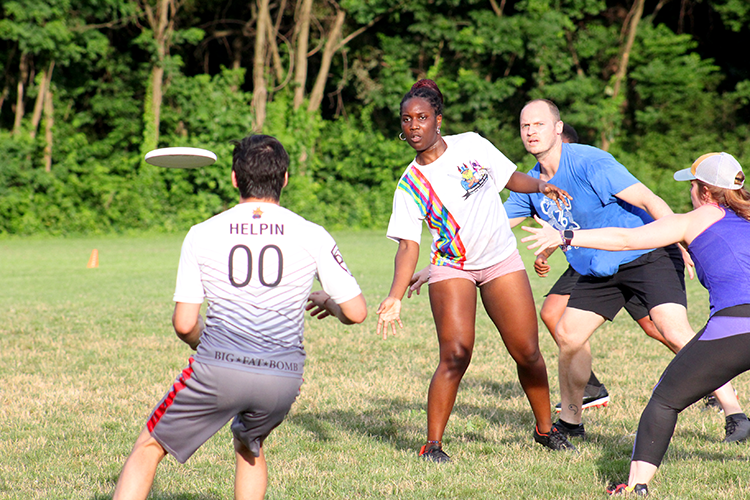
Advocates for preserving Edgely push back on claims that their programming doesn’t benefit local youth. Although thousands of adults and youth from across the region play ultimate at Edgely, according to figures provided by López, 77 youth from the West Philadelphia zip codes closest to Edgely take part in PADA youth leagues. Including the next ring of zip codes pushes the number up to 185. With the Saints now having access to Edgely Field for practice and games, the youth participating in their programs are now benefiting from the quality of the grass there as well.
PADA’s advocates argue that building a new track and field complex on top of Edgely will exacerbate the city’s overall shortage of quality fields, and that the City needs to take a more systematic approach. “We absolutely think the city needs more field space, and this would not be a net positive for quality field space,” López says.

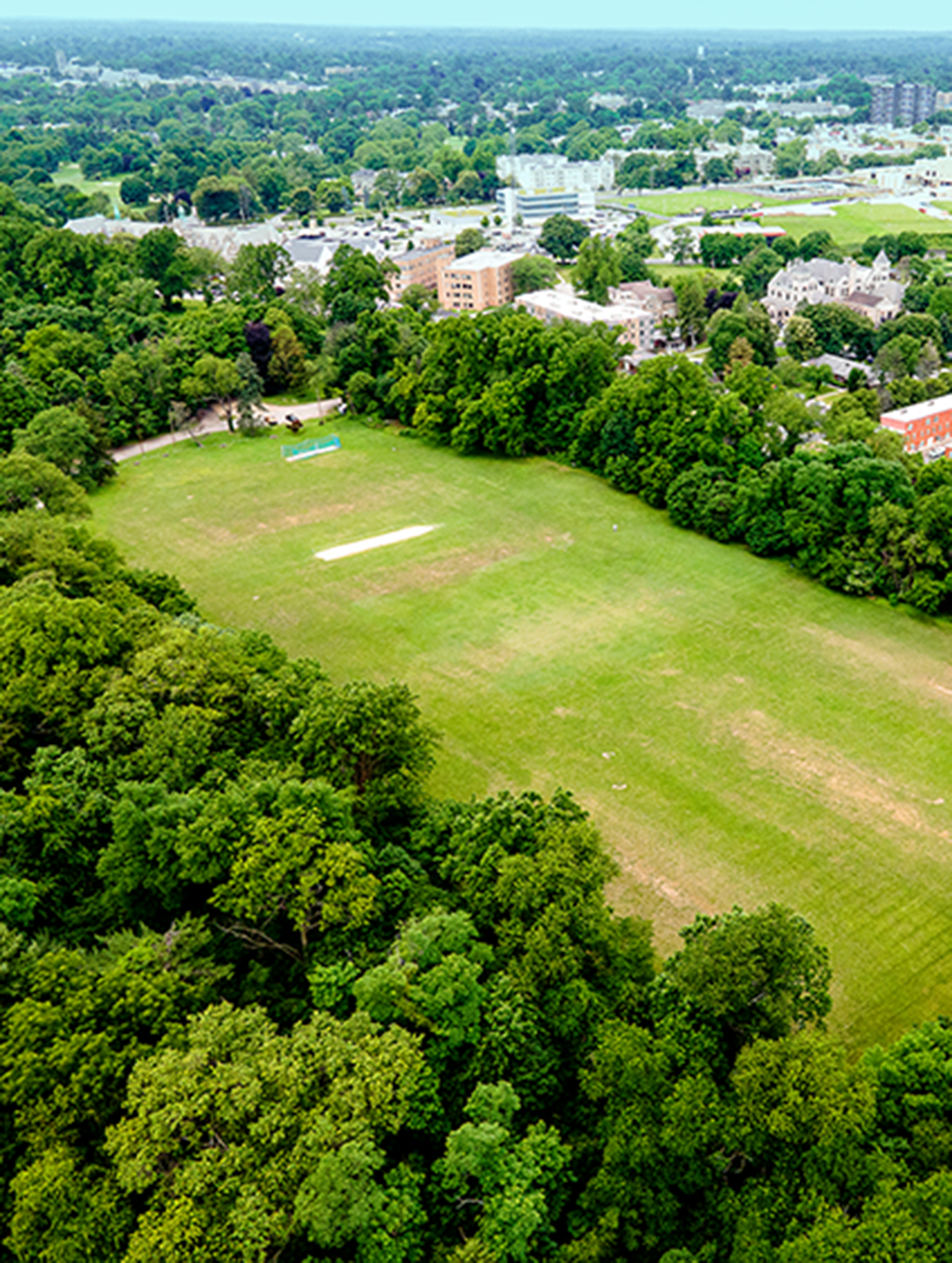
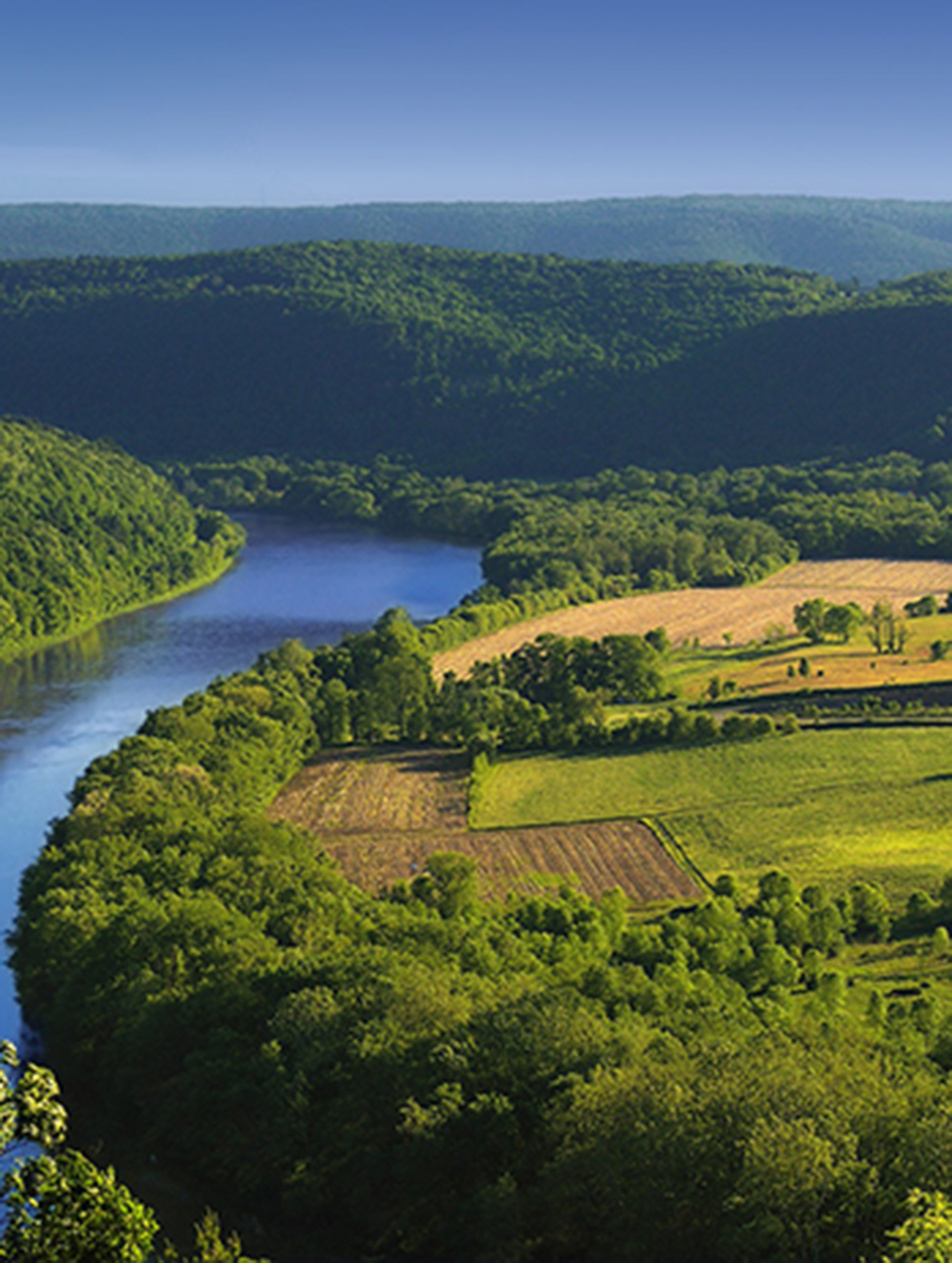
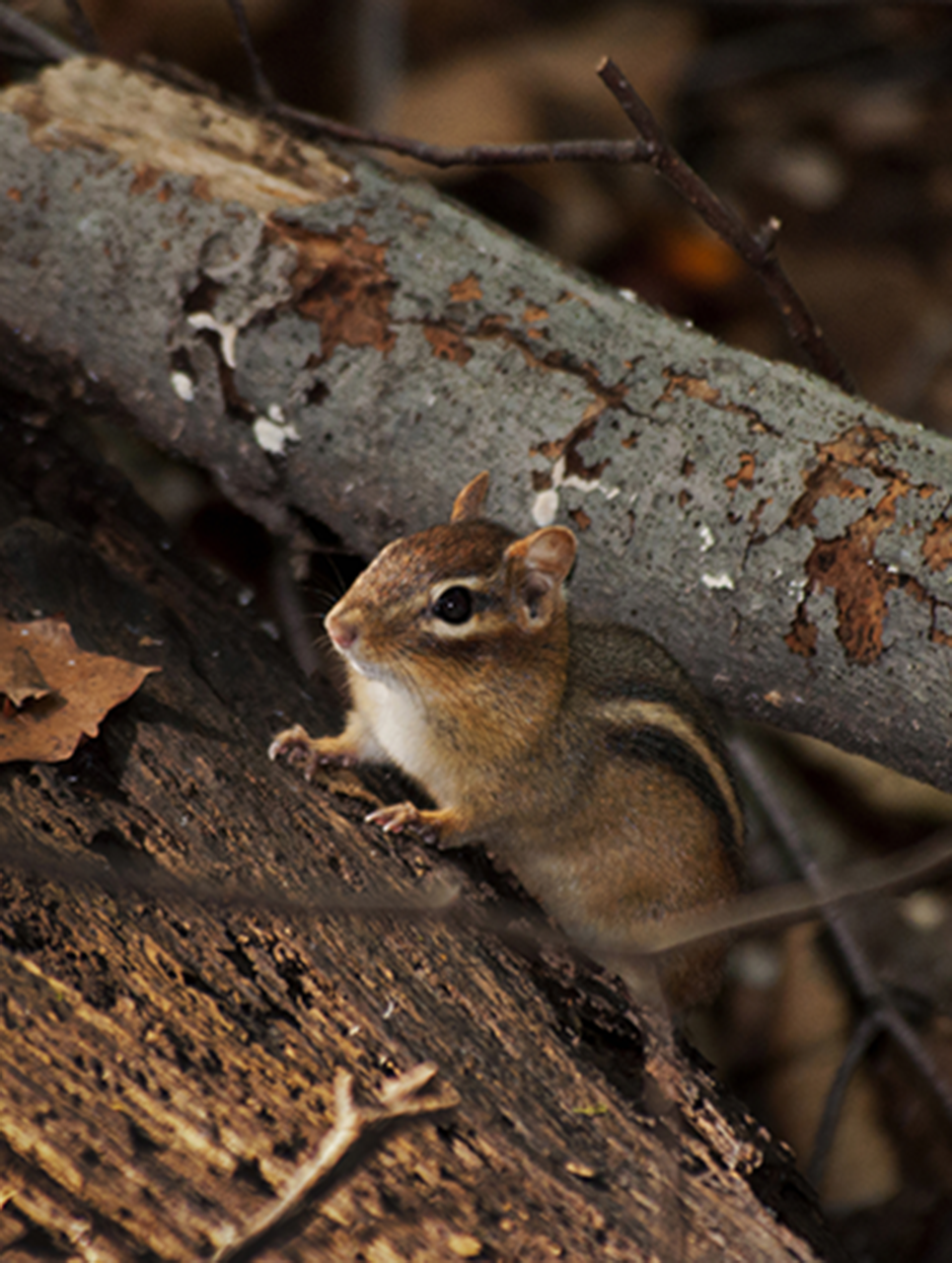
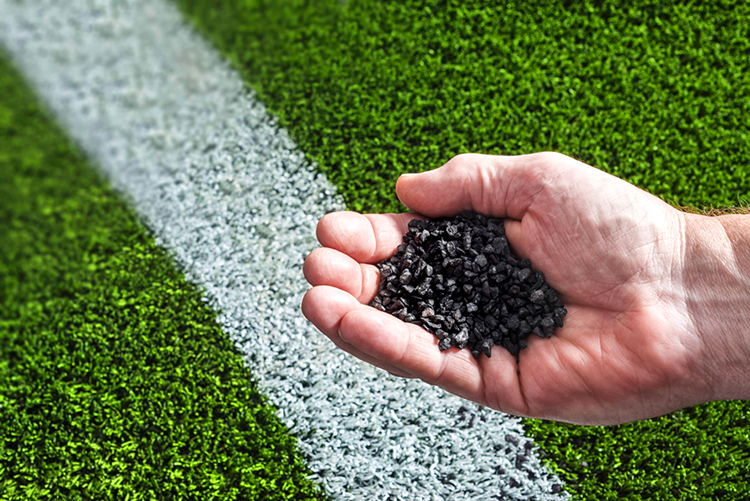
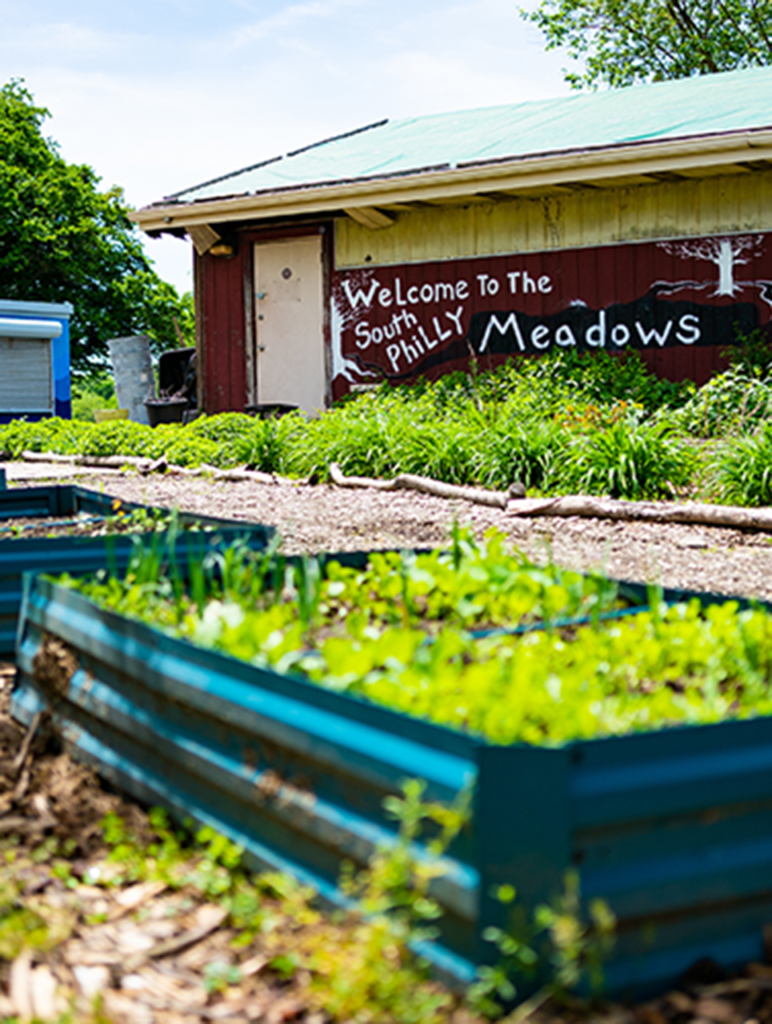
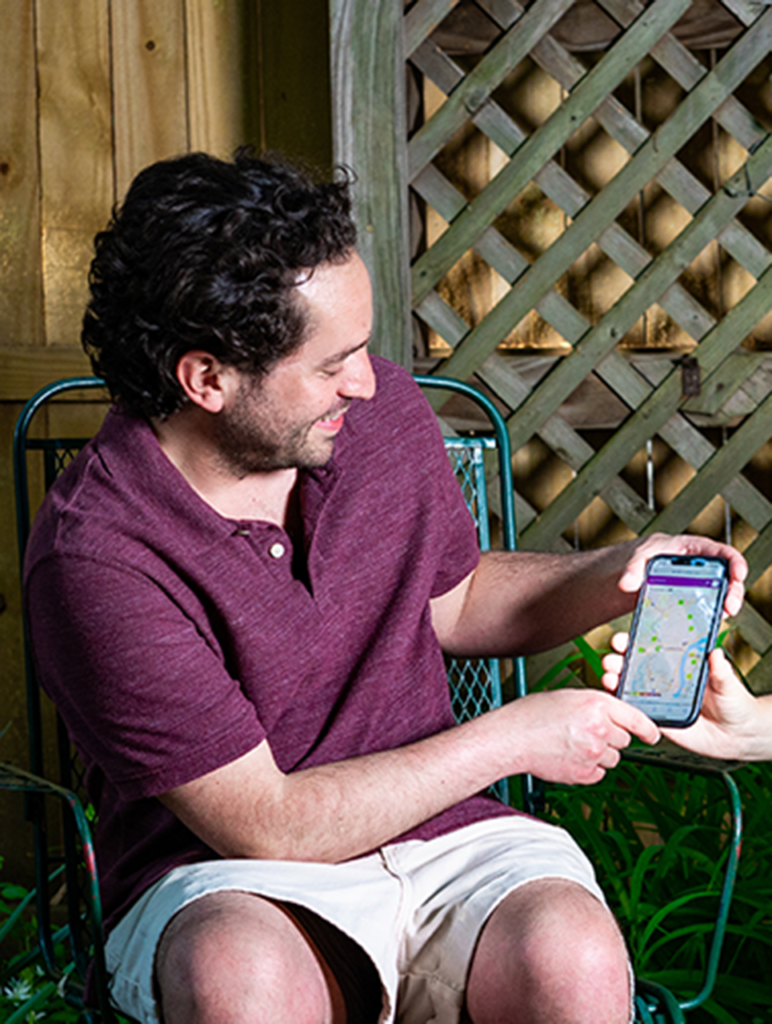


I live 10 min walking distance from edgly field for over 50 years now . Im involed in the park and local communities. I’m aware and have watched the Frisbee community grow on the field for many years. Not once ever have I heard or seen any local community outreach from any users of that field.
Apologies to Mr. Howie’s comment above but PADA clearly hasn’t been vocal enough about the outreach they’ve done primarily because they we concerned with the outreach and not the publicizing of the outreach. PADA has a very significant number of dedicated volunteers who advertise, teach and spend time with local youth to teach them the sport of Ultimate. They recently applied for and received a significant grant to teach ultimate across the School District of Philadelphia schools. They consistently maintain (and fund) these fields as well as volunteering to clean other parts of Fairmount Park on a regular basis. So again, apologies that you have not personally witnessed the time, effort and money spent to help maintain Fairmount Park by PADA, I don’t think we realized that it was something that we needed to be as vocal about. We just did it.
Two factors I think should be considered.
Football is expensive to operate and it’s deadly